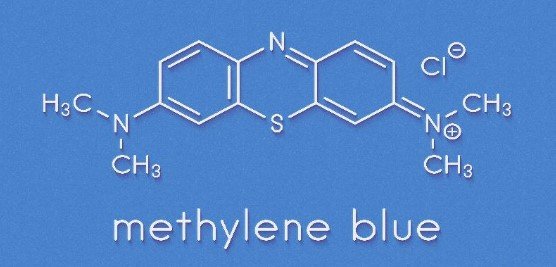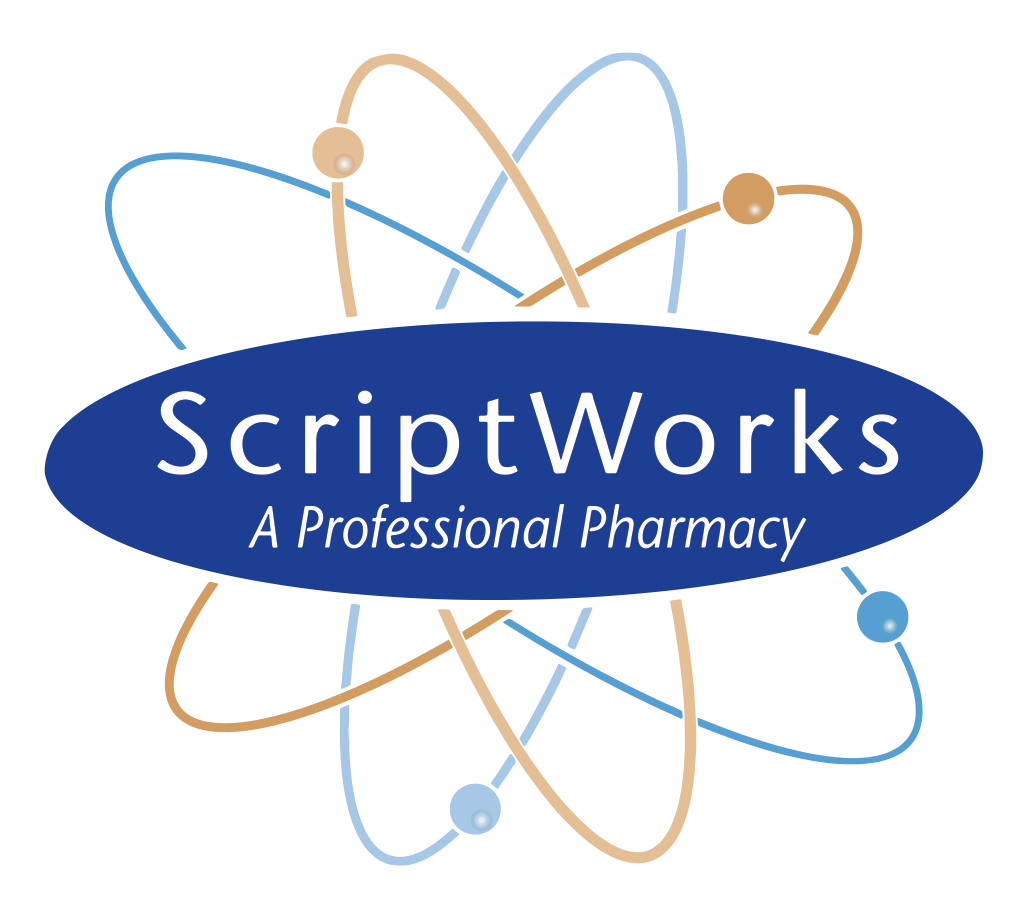
Author: Bob Brensel | President, Pharmacist | ScriptWorks
Bob Brensel, RPh, earned his Pharmacy Degree at University of the Pacific in Stockton, California in 1980. He was honored as a student with the Longs Drugs Stores, “Outstanding Intern Scholarship” in 1977. Read More →
The Potential Benefits of Methylene Blue and More
Brief History of Methylene Blue

The first medical use of this drug was used on soldiers suffering from malaria during World War II. It’s actually the first synthetic medicine used to address illnesses in human patients. It is still being used in some cases of malaria today.
So why are we getting so many calls?
In recent years, researchers have explored the idea that oxidative stress is linked with systemic aging of various tissues including those in the brain and on the skin. Methylene blue (MB), a well-established drug used for other conditions, is now being investigated to relieve this oxidative stress.
MB has a small molecular weight with both hydrophilic and lipophilic properties. This allows it to be easily delivered into the tissues and, once absorbed, MB can stimulate mitochondrial respiration and diminish oxidative stress.
Neurological Disease
Methylene blue has a direct effect on Mitochondria (the powerhouse of the cell). Mitochondrial dysfunction and oxidative stress have been observed in systematic aging that affects many tissues, including the brain and skin. Drugs that improve mitochondrial function and reduce oxidative stress may be appropriate ways to address cognitive decline and neuroprotection. It is the increase in oxygenation in the cells that is the mechanism by which methylene blue provides support.

This interview by Dr. Peter Attia, MD and Francisco Gonzalez Lima, PhD from the University of Texas discusses the complexity of the brain and the cognitive benefits of MB.
Lyme Disease and Bartonella
Researchers at Johns Hopkins University Department of Molecular Microbiology and Immunology completed a drug screen to identify effective medications against the stationary phase Bartonella. Their research discovered 110 drug candidates from an FDA-approved library that had better activity against Bartonellla than Ciprofloxacin. The researchers confirmed their findings by performing a MIC study, and Methylene blue performed very well.
Helping Patients
A majority of patients can be maintained at a daily dose of 15 mg in capsule form. A dose of 50 mg taken twice daily has been used to address Lyme disease. A starting dose of 200 mg has been used in patients with COVID.
Methylene blue is best taken in the morning because it can be a mild stimulant and disrupt sleep patterns.
Clinical Considerations
Methylene Blue and Serotonin
Methylene Blue: Some Possible Indications, Side Effects, Warnings
- Arm or leg pain
- Blue or green urine
- Skin discoloration
- Altered taste
- Dizziness
- Headache
- Nausea
- The sensation of feeling hot
- Anemia
Quality of Compounded Methylene Blue Capsules is Important
If you’re a California medical practitioner interested in MB got your patients, please connect with our experts and we’ll help provide the best experience for your patients
References
Xue, H., Thaivalappil, A., & Cao, K. (2021). The Potentials of Methylene Blue as an Anti-Aging Drug, Cells. 2021 PMID: 34943887. Published online 2021 Dec 1. doi: 10.3390/cells10123379 National Library of Medicine.
Auchter, A., Williams, J., Barksdale, B., Monfils, M.H., & Gonzalez-Lima, F. (2014). Therapeutic Benefits of Methylene Blue on Cognitive Impairment during Chronic Cerebral Hypoperfusion. Journal of Alzheimer’s disease : JAD. 42. 10.3233/JAD-141527.
Sloan, M. (2021). The Ultimate Guide to Methylene Blue. Accessed March 2023 at endalldisease.com.
Tucker, D., Lu, Y., & Zhang, Q. (2018). From Mitochondrial Function to Neuroprotection — An Emerging Role for Methylene Blue. Mol Neurobio, 55(6), 5137–5153. Accessed March 2023 at https://doi.org/10.1007/s12035-017-0712-2.
Rojas, J.C., Bruchey, A.K., & Gonzalez-Lima, F. (2012). Neurometabolic Mechanisms for Memory Enhancement and Neuroprotection of Methylene Blue. Prog Neurobio, 96(1), 32–45. Accessed March 2023 at https://doi.org/10.1016/j.pneurobio.2011.10.007.
Kayabasi, Y. & Erbas, O. (2020). Methylene Blue and Its Importance in Medicine. D.J. Med Sci 2020;6(3):136-145. Accessed April 2023 at https://www.journalmeddbu.com/full-text-pdf/213.
Schirmer, R.H., Coulibaly, B., Stich, A., et al. (2003). Methylene Blue as an Antimalarial Agent. Redox report : communications in free radical research, 8(5), 272–275. Accessed April 2023 at https://doi.org/10.1179/135100003225002899.
Gonzalez-Lima, F. & Auchter, A. (2015). Protection Against Neurodegeneration with Low-dose Methylene Blue and Near-infrared Light. Front Cell Neurosci, 9, 179. Accessed April 2023 at https://doi.org/10.3389/fncel.2015.00179.
Atamna, H., Nguyen, A., Schultz, C., et al. (2008). Methylene Blue Delays Cellular Senescence and Enhances Key Mitochondrial Biochemical Pathways. FASEB J. 22(3):703-712. Accessed April 2023 at https://doi.org/10.1096/fj.07-9610.
Biju, K.C., Evans, R.C., Shrestha, K., et al. (2018). Methylene Blue Ameliorates Olfactory Dysfunction and Motor Deficits in a Chronic MPTP/Probenecid Mouse Model of Parkinson’s Disease. Neuroscience. 2018;380:111-122. Accessed April 2023 at https://doi.org/10.1016/j.neuroscience.2018.04.008.
Zheng, X., Ma, X., Li, T. et al. (2020). Effect of Different Drugs and Drug Combinations on Killing Stationary Phase and Biofilms Recovered Cells of Bartonella henselae in vitro. BMC Microbiol 20, 87 (2020). https://doi.org/10.1186/s12866-020-01777-9.
The information contained in this website or provided through our blogs, e-mails, videos, programs, services, or products is for educational purposes only and is not intended to substitute for professional medical advice, services, diagnosis, or treatment.

